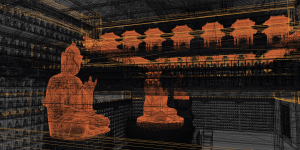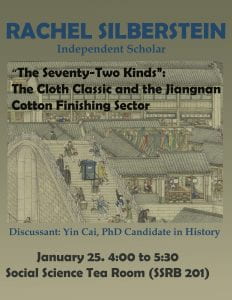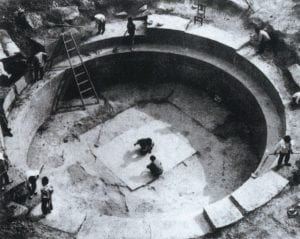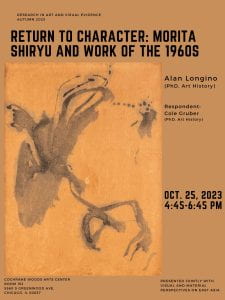Please join us on Monday, February 5, from 4:45-6:45pm at *CWAC 157* for a special workshop of VMPEA featuring:
Ouyang Zhenyu
Lecturer in Fine Arts, School of Humanities and Social Sciences, Xi’an Jiaotong University
Who will be presenting the paper
“Modern Approaches to Restoration: The Dispersed Chinese Art Digitization Project (DCADP)”
*With a reception to follow in the CWAC lounge*
For participants on Zoom, please register at this link (password: 000000). Please see the abstract and bio of our presenter below.
We hope to see many of your faces there!
This event is sponsored by the Center for the Art of East Asia, University of Chicago.

Abstract
This lecture will mainly introduce the overall academic concept and research methods of the DCADP project. Through introducing the research achievements and processes of the Zhihua Temple Digital Restoration Project and the Empress Procession Restoration Project in Binyang Central Cave, Longmen Grottoes, this presentation aims to elucidate the value and role of plastic artists and digital technology in the field of art history. Taking the Empress Procession restoration project as an example, this presentation hopes to bring forward discussions on the definition and concept of “restoration” as well as some thoughts on how to accurately interpret the significance and possible application of our restoration research.
Bio
Ouyang Zhenyu is a lecturer in the Fine Arts Department in the School of Humanities and Social Sciences at Xi’an Jiaotong University. He is also advising several Master’s theses and currently a doctoral candidate in the School of Human Settlements and Civil Engineering at Xi’an Jiaotong University. He is a practicing sculptor and has engaged in research on traditional Chinese plastic arts. In recent years, he primarily focuses on research related to the digital restoration and exhibition of Chinese cultural heritage dispersed overseas.





